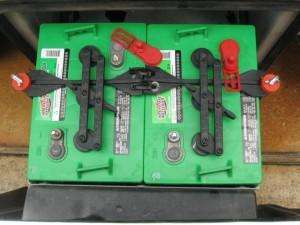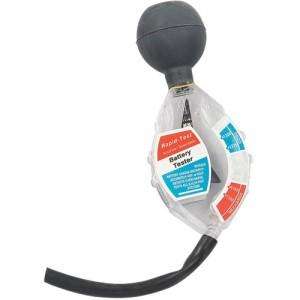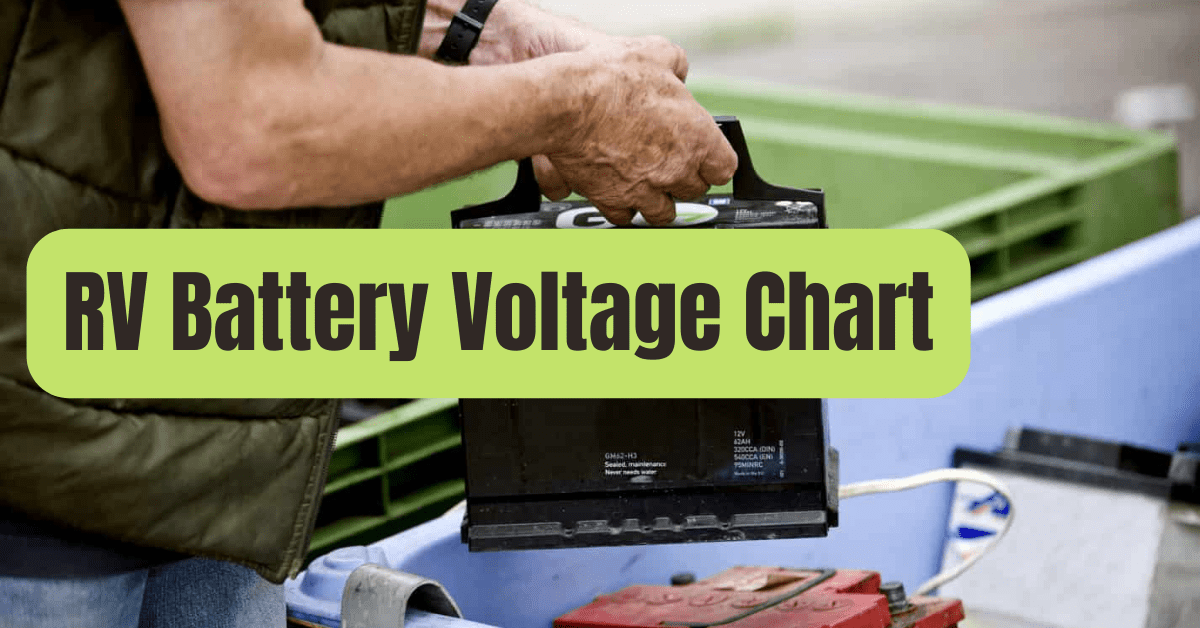Here is a quick, straightforward, and untechnical explanation of the various RV battery voltage types and their state of charge, or SOC.

Because your RV system is constantly performing different tasks and electricity is constantly coming and going, there isn’t a straightforward relationship between battery voltage (what a voltmeter reads or how many of those four idiot lights are illuminated on your display) and state of charge (what the actual storage status of your battery is, with 100% being fully charged and 0% being flat dead).
For a battery that has been sitting for about an hour and has been isolated from all charge sources and loads, there is a straightforward link between the two, but you don’t want to do that each time you examine the system.
However, it’s a good place to start.
The battery’s “open-cell” or “resting” voltage is referred to as this.
Resting fully charged 12-volt batteries are about 12.8-12.9 volts, and flat dead ones are around 12.0 volts, thus 12.4 volts on a resting battery suggests it’s roughly 50 percent charged.
Overview of RV Battery Voltage
In general, loads (battery drains) lower the battery’s actual voltage below its resting voltage while charging inputs raise it above it.
Crank up your Onan or engine generator, or connect into shore power, and your voltage climbs up to 14.0 – 14.5 volts, even when your battery is critically drained.
Turn on a heavy load like the microwave (assuming you have a powerful inverter that will power it), and voltage goes down into the 11.5-11.8 volt region, even on fully charged batteries.
Again in general, the higher the charging current or load, the more above or below your resting voltage your system will be.
So glancing at the voltage doesn’t give you an accurate sense on how charged your battery is — you have to adjust for loads and charging sources.
A Simple Way To Check Your RV Battery’s State of Charge (SOC)

Using a hydrometer, a simple instrument that measures the density of your battery’s electrolyte, is the only certain method to precisely ascertain the status of charge.
Batteries that are fully charged contain a lot of sulfuric acid in the electrolyte; however, depleted batteries don’t because when the battery discharges, the acid transforms into lead sulfate on the battery plates.
Fully charged batteries have an electrolyte specific gravity in the range of 1.255-1.275, 50% drained batteries read 1.175-1.195, and dead batteries read 1.095-1.115 because sulfuric acid is heavier than water.
They will also feature color-coded ranges that indicate a good battery, a so-so battery, or a dead battery in addition to the specific gravity data.
You won’t be doing this frequently or while driving because using the hydrometer requires you to remove your battery tray, open one of the caps, and suck up some electrolyte into the hydrometer.
You won’t be doing this at all if you use AGM batteries, which the newest Roadtreks have since there are no caps and you can’t even get to the electrolyte.
For those of us who like the old-fashioned way, though, you may use the hydrometer to calibrate your voltage display under known load settings so that you will be aware of which voltage reading corresponds to which state of charge.
What Is The Maximum Load That Your RV Battery Can Withstand?
By “recognized load circumstances,” what do I mean? For example, we frequently have a fan running, the TV is always on, and there are one or two interior lights on in my Roadtrek.
When this stuff is running, I charge my batteries, check to see if they are charged by making sure the hydrometer reading is around 1.26, and monitor my voltage display.
The meter reads 12.5 volts and has three idiot lights.
That has a full charge under this load.
I now turn the material on for a few hours, return with the hydrometer, and discover that the specific gravity has decreased to 1.18, or half discharged.
I have one idiot light on, and my voltage meter reads 11.7.
I now realize that I need to recharge my batteries at this point because of the burden of the TV, fan, and lights.
Unless you’re in an emergency, never run your batteries below 50%.
With a voltage reading of 11.7, which represents a 50% discharge, I can now put the hydrometer away and start the generator.
Easy.

There is a specific voltage that correlates to various levels of charge for your batteries under load.
Since everyone has different numbers, kinds, and normal loads, 11.7 volts on your system may represent more or less than 50% depleted.
However, the idea is the same.
Here is a discussion of this by Surrette, the most upscale battery maker in existence, for those of you who are still awake.
They talk about turning on all your loads, which is absurd in my RT, so that probably means using a larger load than mine.
However, test your own system and use a load that’s simple to establish; for me, that’s the TV, which is on as soon as my wife wakes up and stays on until she falls asleep and I turn it off.
There is a reliable battery voltage that corresponds to 50% discharge when your batteries are under this load.
You and your batteries will live long, healthy lives if you maintain a voltage above that level.










